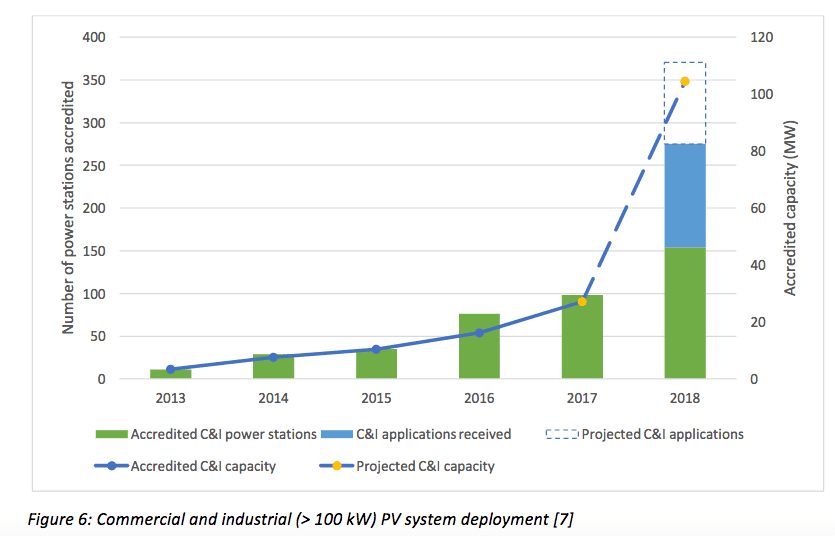Australia could reach the equivalent of 100 per cent renewables for its electricity needs by the early 2030s by doing nothing more than maintaining the current pace of wind and solar development, a new research report has found.
The report – published by a heavy-hitting team of Australian National University researchers, including solar PV and pumped hydro expert Andrew Blakers – says keeping up the current rate of renewable energy deployment would also meet Australia’s entire emissions reduction task “for the whole economy” by 2025.
 To reach these conclusions, the team analysed data for the federal government’s own Clean Energy Regulator, showing that during 2018 and 2019 the nation would install about 10,400MW of new renewable energy.
To reach these conclusions, the team analysed data for the federal government’s own Clean Energy Regulator, showing that during 2018 and 2019 the nation would install about 10,400MW of new renewable energy.
ANU Energy Change Institute director Professor Ken Baldwin said that at that rate, Australia would eclipse the Renewable Energy Target, reaching 29 per cent in 2020, and by 2025 would reach 50 per cent – a number the federal Coalition likes to say is “recklessly high”, even for 2030.
Perhaps even more importantly, staying on the current trajectory would see electricity sector emissions reduced by 26 per cent in 2021, and the Paris economy-wide emissions reductions target of 26 per cent met five years early, in 2025.
 It’s an impressive set of numbers, particularly considering that just three years ago, much the same ANU team forecast that Australia could reach 100 per cent renewables by 2040 by adding just under 4GW (4,000MW) of wind and solar capacity a year.
It’s an impressive set of numbers, particularly considering that just three years ago, much the same ANU team forecast that Australia could reach 100 per cent renewables by 2040 by adding just under 4GW (4,000MW) of wind and solar capacity a year.
The upwards revision could be partly due to what the report calls “an important recent development:” the rapid growth in deployment of solar PV on the roofs of commercial and industrial enterprises (see Figure 6, below).

The ANU forecast compares to recent modelling from the Australian Energy Market Operator, which shows renewables making up 46 per cent of NEM generation by 2030 in their “neutral scenario”, and 61 per cent of generation by 2030 in their “fast change” scenario.
But while the ANU experts have every faith in the renewable energy industry – and the technology – to get the job done, they have their doubts about the politics, which at a federal level is now more uncertain than ever for investors in solar and wind.
“Australian industry is proving it’s not difficult or expensive to make deep and rapid cuts to greenhouse gas emissions,” said Baldwin in comments on the report on Monday.
“All the evidence points to Australia’s capacity to be a renewable energy superpower, with all the economic and environmental benefits that come with that.
“We need Australia’s governments to put in place the right plans for the renewable energy train to have a smooth ride,” he said.
“The remaining piece of the puzzle is more storage and stronger interstate interconnection, which is where governments should be focussing their attention,” said Dr Andrew Stocks, from ANU Research School of Engineering
“Pumped hydro storage – such as the proposed Snowy 2.0 – is off-the-shelf technology, while batteries are rapidly falling in price.
“Our message is that the renewables train has developed great momentum, so policy makers need to get on board,” said Dr Stocks.